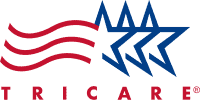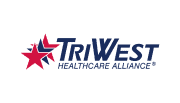
Harm Reduction and MAT in Addiction Recovery
Harm reduction is a term you have if you’re familiar with opioid addiction. It’s one of many tools meant to help addicted people stay alive. MAT, also known as Medication-Assisted Treatment, is often confused with harm reduction efforts. While both are useful tools, especially regarding opioid use disorder, they both serve different functions. Harm reduction and MAT both save lives, but in different ways.
Harm Reduction in the Community
People in communities affected by the opioid epidemic often have harm reduction initiatives that they work on. Tools that reduce harm aren’t meant to get a person sober, but they CAN help people by preventing overdoses. Opioids, after all, are dangerous drugs and overdose is the top health concern concerning active addiction. People caught in the web of addiction may try to get sober but not be ready to change. Because of this, they’re at high risk of overdosing. People who use opioids often have to worry about the fear of overdose, withdrawal symptoms, and the way that consistent drug use affects their health in general.
Substance use disorder can lead to poor health outcomes. It can take a toll on a person’s mental health. Withdrawal symptoms, fear of not being able to access drugs, the danger of overdose, poor health, skin infections, HIV or hepatitis, and social stigmatization are all potential outcomes of living with substance use disorder.
People who promote harm reduction focus on keeping people safe if they use it. They do not try to coerce people into treatment but don’t help them find drugs, either. Instead, they help the person who uses drugs live a safer lifestyle. Many people take this to be an enabling behavior, but harm reduction does save lives. Providing opioid users with clean needles and rubbing alcohol has helped stem HIV and hepatitis C outbreaks in communities. Harm reduction advocates have also worked to normalize opioid-reversal drugs like Naloxone.
Harm reduction doesn’t treat addiction, and it doesn’t typically involve doctor visits. It does, however, keep a person who struggles with opioid use alive until they realize that sobriety is the best option. Harm reduction advocates have a code of principles they follow when carrying out their tasks.
Medication-Assisted Treatment (MAT) Is A Clinical Treatment
People who are addicted to opioids often opt for MAT when they get sober. MAT makes the process easier, reducing symptoms of withdrawal and cravings. People who take MAT are prescribed medication by a doctor or nurse practitioner. It is healthcare and is covered by all insurance programs, including Medicaid and Medicare.
The medication used in MAT is prescribed. Some MAT treatments for opioid users include methadone and naltrexone. There are also other medications meant to help people quit using alcohol. The decision to use MAT is between a healthcare provider and their patient.
Alongside medication, therapy helps an addicted person begin to face the wreckage caused by addiction. Therapy is an important part of recovering from a substance use disorder, and will help a person begin to build better-coping skills. Many people find that peer support groups such as Alcoholics Anonymous are essential to adjusting to life without the use of substances.
Getting Help For A Substance Use Disorder
Are you or somebody you love facing challenges due to their alcohol or substance use? You don’t have to hit a terrible bottom to get help. We can help you get sober and begin to build a better life. Learn more about our programs by calling at 619-363-4767.
Categories
Recovery





